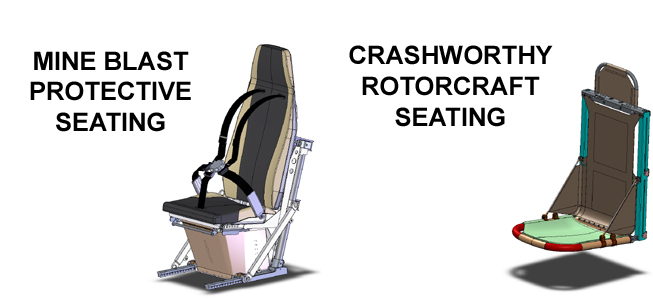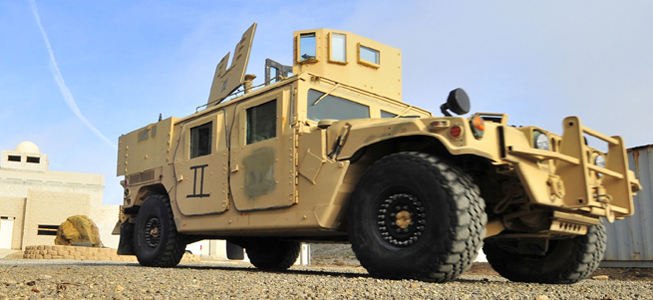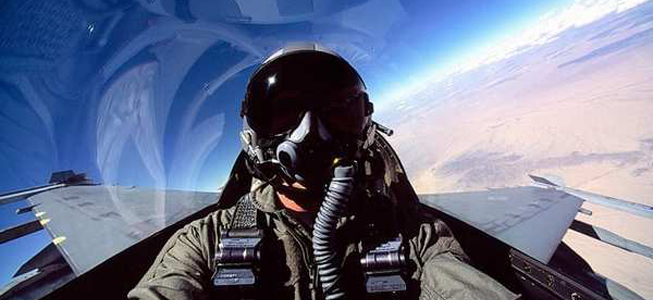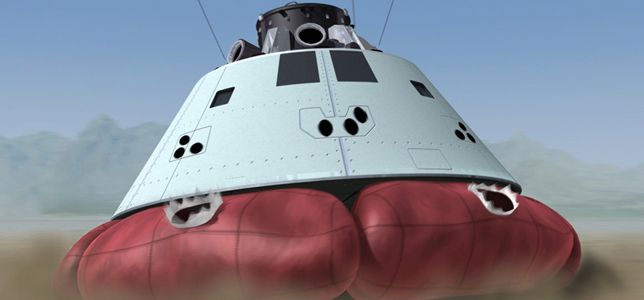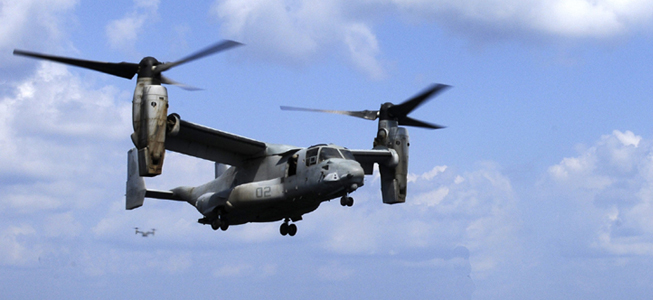Products
Innovative Seat Restraint Systems for Troops in Rotocraft
Safe, Inc. has been awarded a Phase I SBIR program to develop and demonstrate innovative and advanced concepts for seat restraint systems, which will be intuitively easier and faster to use under any adverse conditions and can be readily integrated into existing forward, aft, and side-facing troop seats in military rotorcraft, while providing the necessary protection requirements to prevent injuries during crash. An easier-to-use more intuitive restraint system would not only facilitate proper use reducing aircraft-related crash injuries and deaths, but would be expected to increase the success ratio of troop extractions, which could lead to saved helicopters as well as saved lives.
Hands-Free, Automatic Coupling Restraint System
Safe, Inc. has been awarded a Phase I SBIR program to develop and demonstrate a hands-free, automatic coupling restraint system that would eliminate the need for the Soldier to manually connect (to), activate, disconnect (from), and de-activate the vehicle restraint system. The leading cause of injuries and fatalities in military ground vehicles can be attributed to troops not wearing seat belts during accidents, and not from combat, as would be expected. This new restraint system would significantly decrease the number of injuries and fatalities occurring among unrestrained troops.
Efficient Cargo and Personnel Handling System
This Phase I SBIR program will develop a replacement seating system coupled with a device to more safely and easily move cargo and personnel along the length of the US Navy C-2 Greyhound aircraft. This system is anticipated to reduce the turnaround time for carrier on-board delivery aircraft. The seating system will focus on reducing installation and removal time, reducing stowed volume and weight, and reducing the occurrence of injury to handling personnel. Safe’s goal is to develop concepts that can be utilized in the aircraft without requiring aircraft modification.
Life Improvement of Plain Airframe Bearings
Safe, Inc. has been awarded a Phase I SBIR contract to develop a physical shield to protect spherical bearings from abrasive particulates, such as sand and dirt. The shield will prevent much of the contamination damage that shortens bearing life on rotorcraft. The initial effort by Safe will be to design a shield that will minimize heat build-up, reduce maintenance costs in both labor time and materiel, reduce operation costs and time lost by increasing the lifespan and dependability of critical aircraft systems. The ultimate goal of this program is to develop a shield that will minimize the impact on assembly weight, on the flexural resistance, and on the overall bulk of the assembly.
Crash Responsive Crew Protection Systems — Army Helicopters
Safe has received an extension of an existing contract from the Aviation Applied Technology Directorate (AATD), Fort Eustis, VA. The contract is part of a Multi-phase Two Step BAA contracting vehicle to support the development of improved crash protection for crews of Army helicopters.
The additional work will expand on the capability of the crash responsive technology developed by Safe in the previous phase of work. The goal is to extend the capability of current energy absorbing and restraint systems to provide crash protection in significantly more severe crashes than do current systems. The work involves modeling, analysis, design, and testing to be conducted over an 18-month time period. Safe is teamed with AmSafe Aviation of Phoenix, AZ to provide inflatable restraint support to the program.
This Phase I SBIR program will develop an anthropomorphic test device (ATD) (also referred to as a “test manikin” or “test dummy”), which will be used specifically for land vehicle blast testing. The Hybrid III ATD was developed specifically for automobile crash testing and to quantify the types of injuries most commonly experienced in automobile crashes. The human response to blast insult is quite different, and consequently, the automotive ATDs lack biofidelity when exposed to a blast environment.
The initial effort will apply technology developed by Adelaide Test & Evaluation Systems for a Frangible Surrogate Leg to the upper leg, pelvis, and spine for a Combat Injury Manikin (CIMan). Safe’s ultimate goal is to develop an ATD that is biofidelic, yet affordable to use in blast testing.
Safe, Inc. is developing an advanced crashworthy troop seating system that will be common to all U.S. Navy helicopters while providing increased crash protection to the full range of occupant sizes, 5th‑percentile female to equipped 95th-percentile male. The seating system utilizes a new innovative fixed-profile passive energy absorber design and the latest in high performance materials. The seat is being developed under a Phase II SBIR contract from the U.S. Navy.
The solution to the dual hazard of excessive acceleration from blast and slam-down when a ground vehicle is exposed to a mine blast poses a very real challenge. Safe, Inc. has addressed this problem with a seat capable of protecting the occupants of wheeled mine-resistant vehicles from the paired blast and crash energy impulses inflicted by landmines, IEDs, and similar threats located in the road path. Coupled with advanced restraint systems and energy‑absorbing cushion designs, our stroking energy-absorbing seat provides superior protection to occupants of mine-resistant vehicles. This product was initially developed under a Phase II SBIR contract with the U.S. Army (TARDEC), but its application is now being funded internally.
Mission Equipment Restraint System
Helicopters are utilized the world over for transporting personnel and material into hard to reach areas, both during war and in peacetime. In the event of a crash, the material being transported can become as deadly to the occupants of a helicopter as the crash itself. To prevent mission equipment from becoming projectiles, Safe, Inc. has developed the Quadlock Mission Equipment Restraint System, or QRS. Coupled with a PelicanTM equipment case, the QRS will restrain up to 360 pounds of equipment to the floor of the aircraft and withstand a crash load of up to 20 Gs. Simple to use and easy to learn and train, the QRS mounts permanently to the case. Restraint of the case to the airframe cargo rings can take as little as 1 minute, depending on the crew and training. Access to the case contents is enabled as the QRS does not require straps or attachments over or to the lid of the case. Please see our brochure for more information. The QRS was developed under a Phase II SBIR contract from the U.S. Navy.
Multi-Axis Vibration Reduction for Increased Comfort (MAVRIC) for the E-2C/D Aircraft
Safe is developing a new seating system for the crew of the E-2C/D Hawkeye aircraft. The unique vibrations and flight characteristics of the E-2C/D cause significant crew discomfort, distraction, fatigue, and even pain. The new seat will incorporate magnetorheological technology to help isolate the occupant from aircraft-generated vibrations and will optimize seating angles. These seats are being developed under a Phase III contract in support of the Office of Naval Research (ONR) SBIR and Rapid Innovation Funds (RIF) program.
Aircraft pilots risk developing hypoxia—a decrease of blood oxygenation—whenever operating aircraft above approximately 8,000 feet MSL. Hypoxia may develop slowly; as it develops, hypoxia insidiously lengthens a pilot’s reaction time and impairs judgment. Flight becomes more dangerous for pilots, crew, and passengers. Safe, Inc. is developing a warning system that monitors several blood-related parameters and combines these parameters to detect incipient hypoxia. Through the judicial use of the monitored parameters, the system can provide early, reliable alerts with a minimum of false alarms. An early alarm enables the pilot to take remedial action before hypoxia causes serious impairment. This technology is being developed under a Phase II SBIR contract from the U.S. Navy.
From vehicle windows to personal face shields, Safe, Inc. is developing the next generation in transparent armor technology. Coupling cutting-edge polymers with rigid strike face material provides the best protection against ballistic threats at the lowest weight penalty. Removable wear surfaces provide in-field refinishing to maintain window clarity, enabling personnel to easily and safely see in dangerous situations. Lightweight personal face shields protect individuals from flying debris while keeping the head and neck loads to a minimum, providing longer, comfortable working time and reducing stress and strain injuries.
Universal Modular Watercraft Stowage System for Naval Ships (VULCAN)
Safe is developing a reconfigurable common cradle pallet assembly for use on the Littoral Combat Ship. The Universal Modular Watercraft Stowage System for Naval Ships (VULCAN) is an 8ft x 20ft (ISO standard) cradle pallet assembly designed to securely stow and transport the ship’s mission-specific watercraft, and tested to withstand shock and vibration. Designed and tested for specific Surface and Underwater craft, the VULCAN’s flexible architecture makes it adaptable for almost any of the LCS’s mission modules.
For several years, Safe, Inc. personnel have provided education in crashworthiness design technology for rotorcraft and fixed-wing aircraft. Currently, Safe, BAE Systems, and Vortechs Helicopter Analytics, are working together to provide education in crashworthiness technology and practice. These seminars enable clients to understand crashworthiness technologies and to apply these principles to increase the likelihood for aircraft occupants surviving a crash. Practical guidance is provided in applying those principles to develop operational requirements for refits and to evaluate new aircraft offerings. The information presented leads to an operational fleet of aircraft that is more crashworthy, leading in turn to a reduction of severity of military and civil crash injuries and improved survival rates. Seminars are conducted both domestically and internationally to interested groups
